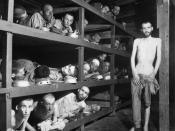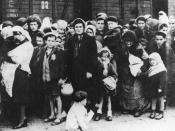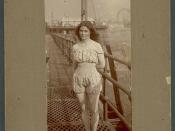A Risen Hell
Pictures can capture memories in many different ways. Looking at a picture close enough can do more than catch your eye, it can tell a story. Sometimes, words aren't even needed to convey the message behind the photo. Some of the most compelling stories are captured in graphic images. These are photographs that produce a negative effect and feeling to the viewer. To truly capture a memorable moment, you really have to see more than the obvious; you have to read the image like a story. The controversy behind the publication of graphic images has led me to take two different opinions.
There are many pictures that bring up controversy in society. Many are of recent, and many were taken in the past. The picture that I have chosen to discuss is on the mass extermination of Jews in World War Two. "War photographs" implies more than just pictures of combat: it can refer to military photographs in general, or photographs of civilians caught in the middle of conflicts.
For many people, the photographs of the concentration camps, which came out only after World War II, were too much. The suffering and death at these and other concentration camps were greater than any before endured. These photographs may be the most shocking ever published. After them there could be equally graphic horrors (such as the Columbine tragedy for example) but not the initial shock at what human beings had done, or the shock of seeing and reading how bad the Jews were treated As war photography and photographs of other extreme situations have become increasingly graphic, it has been argued that seeing such images have made us routinely used to the horrors of such images.
In his essay on the Holocaust, Stephen Feinstein...


